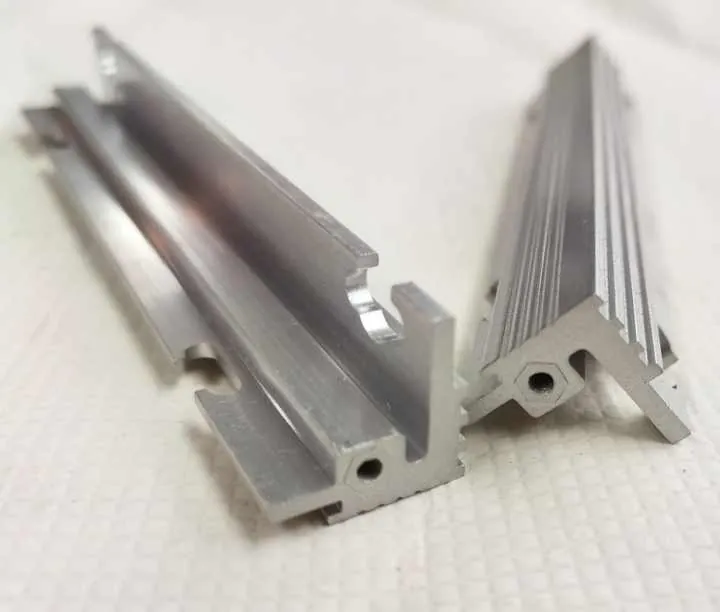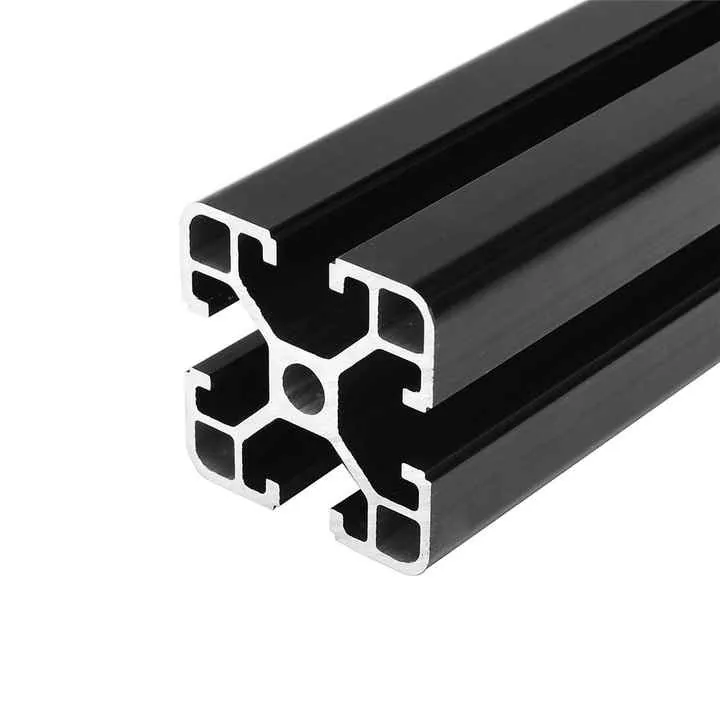What Are the Common Standard Aluminum Profile Shapes and Uses?

I remember facing confusion when I first chose aluminum profiles for a build. I wondered which shape would best fit my goal. That pushed me to study standard aluminum profiles closely.
Standard aluminum profiles come in many shapes—T-slot, U, L, channel, tubular, flat bar—each one useful for specific framing, guiding, or structural needs.
I will guide you through common shapes, alloys, modular assembly, decision factors, and real-world examples.
What are common standard aluminum profile shapes and uses?
There is a wide variety of aluminum profile shapes. Each shape fits different applications in framing and building.

Profiles shape examples include T-slot, U-channel, L-angle, flat bar, square tube, round tube, and panel profiles. Each has strengths in certain tasks.
Basic shapes and their uses
| Shape | Description | Typical Use Cases |
|---|---|---|
| T-slot | Profiles with recessed T-shaped grooves | Machine frames, workstations, guards, enclosures |
| U-channel | Three-sided channel shape | Panel mounting, edge trims, cable guides |
| L-angle | Right-angle profile | Brackets, supports, chart frames, framing |
| Flat bar | Flat strip profile | Reinforcement, shims, mounting strips |
| Square tube | Hollow square cross-section | Structural frames, piping, supports |
| Round tube | Hollow circular profile | Rails, decorative handrails, fluid pipes |
| Panel profile | Shape for holding panels | Walls for machine guards or displays |
When I built a custom table frame, I used 40×40 mm T-slot for main structure and U-channel for cable raceways. It made the build sturdy and tidy.
T-slot profiles are versatile for mechanical and industrial frames.True
Their slot design supports flexible assembly and accessories.
Flat bars are mainly decorative elements.False
Flat bars serve load reinforcement and mounting uses.
Which aluminum alloys are ideal for standard profiles?
Profiles use aluminum alloys selected for extrusion, strength, finish, and cost. Common alloys include 6063, 6061, 6005, and 6082.

Choosing the right alloy depends on whether the profile needs high strength, good visual finish, or formability.
Alloy properties and uses
- 6063-T5: Great for smooth finish and anodizing. Good for trims, frames, architectural parts.
- 6061-T6: Offers high strength, used in load-bearing frames and equipment. Harder to shape decorative finish.
- 6005-T5: Between 6063 and 6061 in strength. Used for medium-load structures like conveyor frames.
- 6082-T6: A European alloy stronger than 6063, suitable for heavy load.
Alloy comparison table
| Alloy | Yield Strength | Finish Quality | Cost Level | Best Uses |
|---|---|---|---|---|
| 6063-T5 | ~110 MPa | High | Low | Windows, displays, cabinets |
| 6061-T6 | ~275 MPa | Medium-Good | Medium | Machinery, structural frames |
| 6005-T5 | ~160 MPa | Good | Medium | Modular frames, automation equipment |
| 6082-T6 | ~260 MPa | Good | Medium-High | Heavy supports, load-bearing builds |
I once chose 6063-T5 for an office display stand. It gave a nice anodized finish. Later, I used 6061-T6 on a heavy machine stand. It held heavy loads perfectly.
6063-T5 is suitable for aesthetic and light structural profiles.True
It offers good finish and enough strength for non-load-bearing uses.
6005-T5 offers the highest strength among common profile alloys.False
Its strength is moderate; 6061-T6 and 6082-T6 are stronger.
How do modular T-slot profiles simplify assembly?
T-slot profiles let you build and modify frames easily. They use slots and connectors instead of welding.

You insert T-nuts into slots. Then bolt on brackets, panels, or accessories. You can adjust or add parts later.
Why T-slot works well
- Tool-free changes: Adjust with a hex key. No need for welding tools.
- Fast build: Assembly with bolts is quick and clean.
- Reusable: Disassemble and rebuild later.
- Clean look: No welding discoloration or grinding marks.
Assembly workflow
- Cut profiles to size.
- Clean slots and slide in T-nuts.
- Attach connectors or brackets at ends.
- Tighten bolts.
- Add panels, wheels, sensors.
Example process table
| Step | Action | Required Tool |
|---|---|---|
| Cut | Trim to length | Miter saw or chop saw |
| Insert T-nuts | Slide nuts into slot | Hands |
| Align connectors | Position angle brackets | None |
| Bolt assembly | Tighten bolts | Allen key |
| Add accessories | Attach panels or sensors | Screwdriver |
I built a mobile lab cart in two hours using 20×20mm T-slot. Later, I added shelves and handles without cutting anything. It took minutes.
Building with T-slot requires welding for strong joints.False
Mechanical connectors create strong joints without welding.
T-slot allows you to adjust or expand frames easily.True
No explanation available.
What factors affect choosing standard aluminum profiles?
You must match profile to function, size, finish, cost, supply, and environment.
Key selection factors include load, size, alloy, shape, finish, assembly method, and budget.
Important selection factors
- Load type: Will it bear static or dynamic loads?
- Shape and size: Choose a profile that suits the task and space.
- Alloy: Pick alloy by desired strength and finish.
- Surface finish: Decide between anodized, powder coated, or mill finish.
- Assembly method: Select T-slot, welding, or adhesives.
- Cost: Include material, tooling, cutting, and machining.
- Lead time: Custom shapes take longer; standard is quicker.
- Supplier support: CAD models, cut-to-length, and technical help matter.
Comparison decision table
| Factor | Option Choices | Why It Matters |
|---|---|---|
| Strength | Alloy type, wall thickness | Must handle expected load without bending |
| Shape | T-slot, tube, flat bar | Determines mounting and structure |
| Finish | Anodized, powder, mill | Affects look and corrosion resistance |
| Weight | Hollow vs solid | Lighter for mobile or suspended systems |
| Assembly | Connectors vs welding | Ease vs rigidity |
| Cost | Off-the-shelf vs custom | Custom needs die cost and larger MOQ |
| Time | Standard vs custom | Custom die lead time may delay project |
| Support | CAD files, services | Speeds design and reduces waste |
I had to build an inspection station requiring heavy load and precise alignment. I chose 40×80mm 6061-T6 T-slot, anodized. The supplier cut it to length and pre-drilled holes. That saved machining and reduced cost. It worked well and looked sharp.
You always need custom extrusions to get mounting features.False
Many standard profiles already include holes or T-slot options.
Profile finish affects corrosion resistance and aesthetics.True
Outdoor use or visible components require coatings or anodizing.
Conclusion
Standard aluminum profiles offer a flexible system for projects. T-slot makes builds modular and reusable. Alloy and shape choices depend on strength, finish, and purpose. Use a checklist to match profile to your application.



